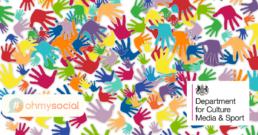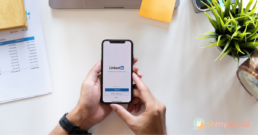Social Media Strategy: A Case Study with DCMS
A marketing strategy for Crown Representative for VCSEs
Overview
We had the privilege of collaborating with the UK's Department for Digital, Culture, Media, and Sport (DCMS) on a transformative social media strategy DCMS project. The challenge was to develop a marketing strategy that would target two distinct audiences: civil servants/commissioners and organisations in the Voluntary, Community, and Social Enterprise sector (VCSEs). Our goal was to make these audiences understand the value of working together with the UK Government, encouraging them to adapt their commissioning behaviours for the greater good.
What we did
- Understanding the Audience: One of the foundational pillars of effective social media marketing is understanding your target audience. In this case, we had two diverse groups: civil servants/commissioners and VCSEs. Our approach began with comprehensive research to grasp their motivations, pain points, and communication preferences. Armed with this insight, we were ready to craft messages that would resonate.
- Clear Messaging and Motivational Communications: The power of plain English cannot be underestimated. To bridge the gap between these two distinct groups, we developed clear and concise messaging. These messages were designed to not only increase understanding but also motivate behaviour change. Our aim was to make it crystal clear why collaboration between civil servants and VCSEs was not just beneficial but crucial for the greater good.
- Event Material: In addition to our digital efforts, we also produced materials that can be used at internal and external events. This was a key component of our strategy to foster engagement and understanding. This involved advising and consulting with speakers to ensure their presentations were engaging and effective.
- Social Media Expertise: A strong social media presence was paramount in reaching our target audiences. We used platforms like Twitter to disseminate our messaging effectively. This was especially crucial given the public sector context of the project, and our previous experience in this domain played a pivotal role.
Results
Engaging Charities and Social Enterprises
- We defined clear objectives aligned with government priorities such as "Levelling Up" and fostering a strong and sustainable VCSE sector.
- Key messages were drafted for various channels, including Twitter, blogs, GOV.UK pages, and LinkedIn.
- Engaging content, including tailored presentations, blog posts, and tweets, resulted in increased engagement and understanding among our target audience.
Presentation to Government Commercial Staff
- We created an engaging presentation showcasing the value of commissioning public services from charities and social enterprises designed to be delivered to government commercial staff. This presentation received positive feedback and demonstrated the potential of the VCSE sector.
Webinar Series
- We created a proposal for a webinar series promoting VCSE readiness to apply for government contracts in targeted sector segments.
Our collaboration with DCMS proved to be a success. Through strategic social media marketing, event planning and clear messaging, we were able to bridge the gap between two distinct worlds and pave the way for a more collaborative future.
Ready to elevate your social media marketing strategy and achieve transformative results? Contact us today to discover how we can help you!
9 Steps to creating a B2B content strategy for LinkedIn
As we know LinkedIn is crucial for B2B companies looking to connect with other businesses and professionals. As the world's largest professional site, over 690 million professionals use the platform to network, research and learn*. Hence, it's essential for B2B companies to create engaging content that resonates with their target audience on LinkedIn.
In this blog post, we will provide some tips and strategies for creating effective B2B content for your LinkedIn company page.
1 - Define Your Target Audience
Before creating any content, it's essential you are clear on who your target audience is. Not only will this help you to tailor your content to their specific needs , it will help you later on if you end up sponsoring your posts through LinkedIn Campaign Manager. Take the time to research your target audience's job titles, industry, interests, and pain points.
2 - Share Valuable Insights and Information
To create engaging content on LinkedIn, you need to share valuable insights and information that will benefit your audience. This could include industry trends, current news, best practices, or thought leadership content. By sharing valuable information, you position your company as a thought leader in your industry, which can help build trust and credibility with your target audience.
3 - Use Eye-Catching Visuals
Visuals are essential on LinkedIn, as they help your content stand out in a crowded feed. According to LinkedIn, posts with images receive 2x more engagement than those without. So, make sure to use eye-catching visuals such as images, carousels, videos, or infographics to accompany your content. When using visuals, ensure they are high-quality, on-brand, and relevant to your content.
4 - Keep it Short and Sweet
The ideal length for a LinkedIn post is between 50 and 150 words, with a clear and concise message. If you need to share a more in-depth piece of content, consider LinkedIn articles.
5 - Use Hashtags
Hashtags are an effective way to increase the visibility of your content on LinkedIn. When using hashtags, make sure to use relevant and specific ones that align with the message and target audience.
6 - Engage with Your Audience
Engagement is key on LinkedIn, so make sure to engage with your audience by responding to comments, asking questions, and starting discussions (polls are useful for this). Engaging with your audience helps you to build relationships, gain insights into their needs and increase the visibility of your content.
7 - Mix Up Your Content Formats
Content formats include text-based posts, videos, images, carousels, infographics and polls. By using a variety of content formats, you can appeal to different learning styles and keep your content fresh and interesting.
8 - Analyse Your Performance
It's essential to analyse your performance regularly. LinkedIn provides insights and analytics on your content's reach, engagement and demographics, which can help you identify what's working and what's not. Use this data to optimise your content strategy and improve your engagement rates.
9 - Consider Sponsored Content
While organic content is essential, it's becoming increasingly difficult to reach your target audience without paid promotion. Consider investing in sponsored content, which allows you to promote your content to a specific audience based on their demographics, interests, and behavior. Sponsored content can help you reach a larger audience and generate leads for your business.
Creating engaging B2B content for your LinkedIn company page requires a strategic approach. By following the tips above you can create a content strategy that resonates with your target audience and generates leads for your business. At Oh my social we understand the importance of creating engaging B2B content on LinkedIn and would be happy to help you create a content strategy that meets your business objectives. Get in touch with us today at [email protected].
*Source: LinkedIn.com


